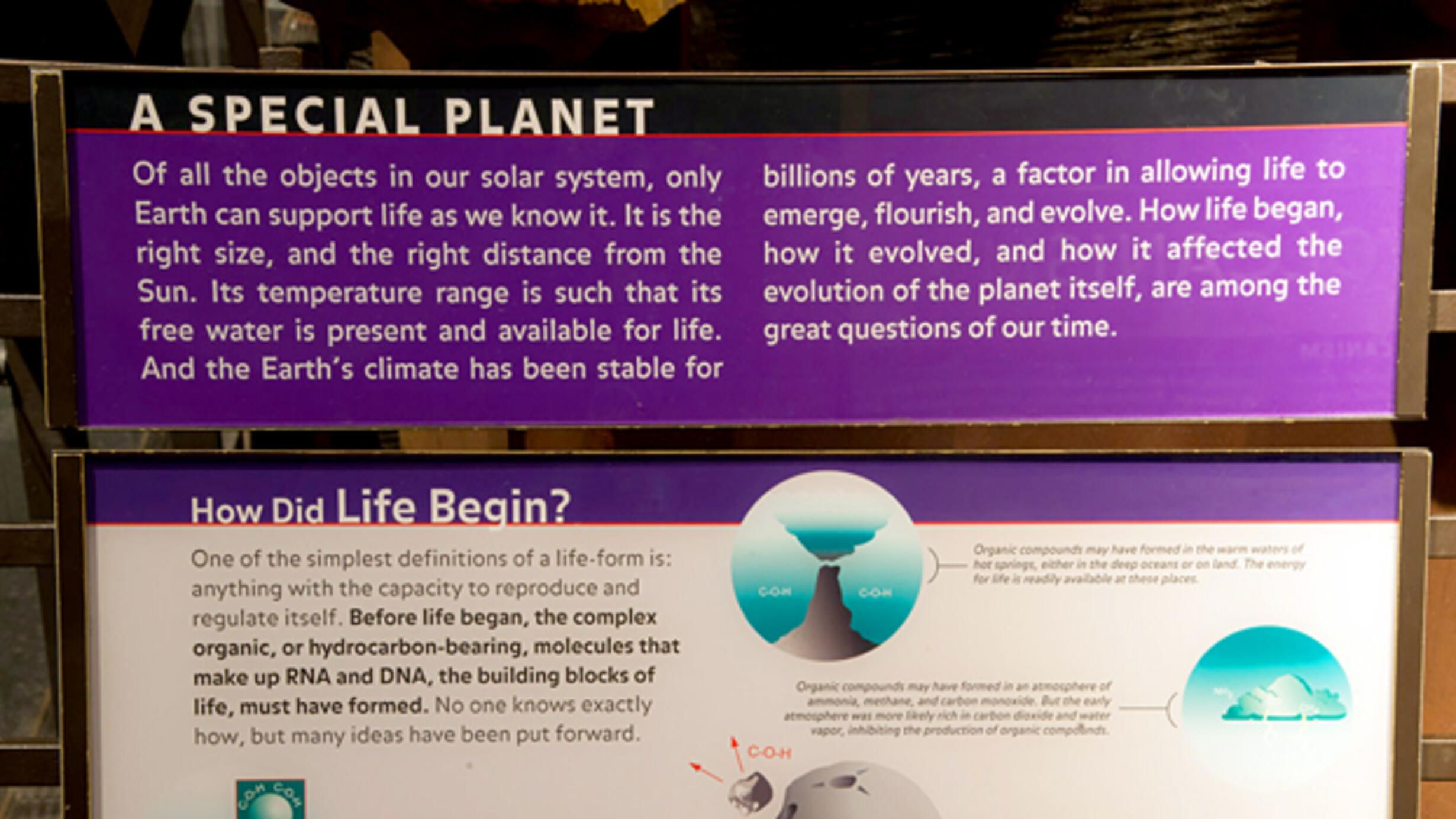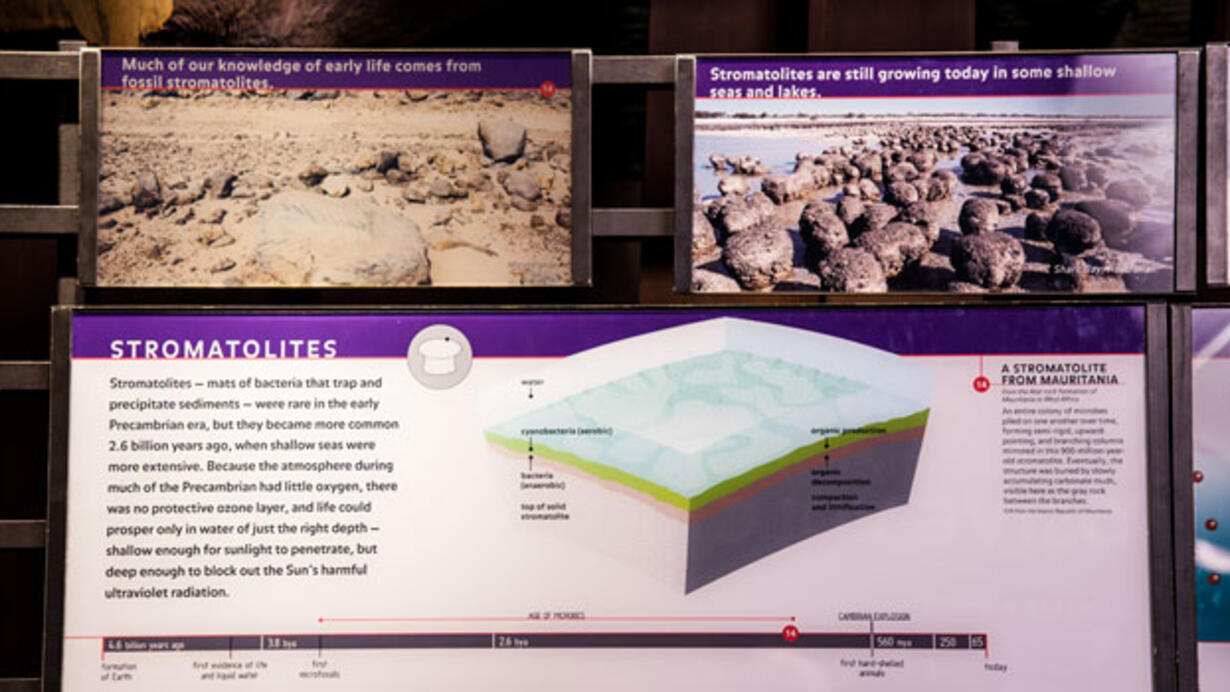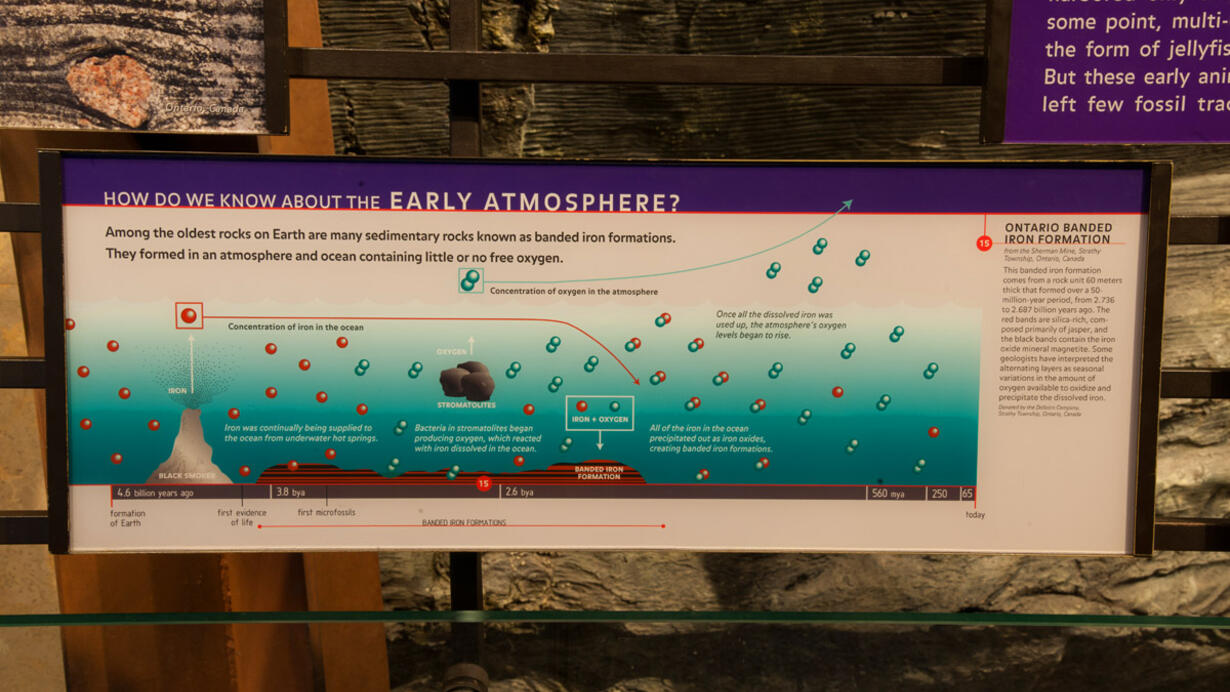A Special Planet
Part of Hall of Planet Earth.

Of all the objects in our solar system, only Earth can support life as we know it. It is the right size, and the right distance from the Sun. Its temperature range is such that its free water is present and available for life. And the Earth’s climate has been stable for billions of years, a factor in allowing life to emerge, flourish, and evolve. How life began, how it evolved, and how it affected the evolution of the planet itself, are among the great questions of our time.
How Did Life Begin?
One of the simplest definitions of a life-form is: anything with the capacity to reproduce and regulate itself. Before life began, the complex organic, or hydrocarbon-bearing, molecules that make up RNA and DNA, the building blocks of life, must have formed. No one knows exactly how, but many ideas have been put forward.
This download explains more about the evolution of our atmosphere and its impact on life on Earth.
In This Section

Stromatolites
Stromatolites — mats of bacteria that trap and precipitate sediments — were rare in the early Precambrian era, but they became more common 2.6 billion years ago, when shallow seas were more extensive. Because the atmosphere during much of the Precambrian had little oxygen, there was no protective ozone layer, and life could prosper only in water of just the right depth — shallow enough for sunlight to penetrate, but deep enough to block out the Sun’s harmful ultraviolet radiation.
photo credit: Craig Chesek, © American Museum of Natural History
photo credit: Craig Chesek, © American Museum of Natural History
photo credit: Craig Chesek, © American Museum of Natural History
photo credit: Craig Chesek© American Museum of Natural History
photo credit: Craig Chesek © American Museum of Natural History
 AMNH/R.Mickens
AMNH/R.Mickens How do we know about the early atmosphere?
Among the oldest rocks on Earth are many sedimentary rocks known as banded iron formations. They formed in an atmosphere and ocean containing little or no free oxygen.